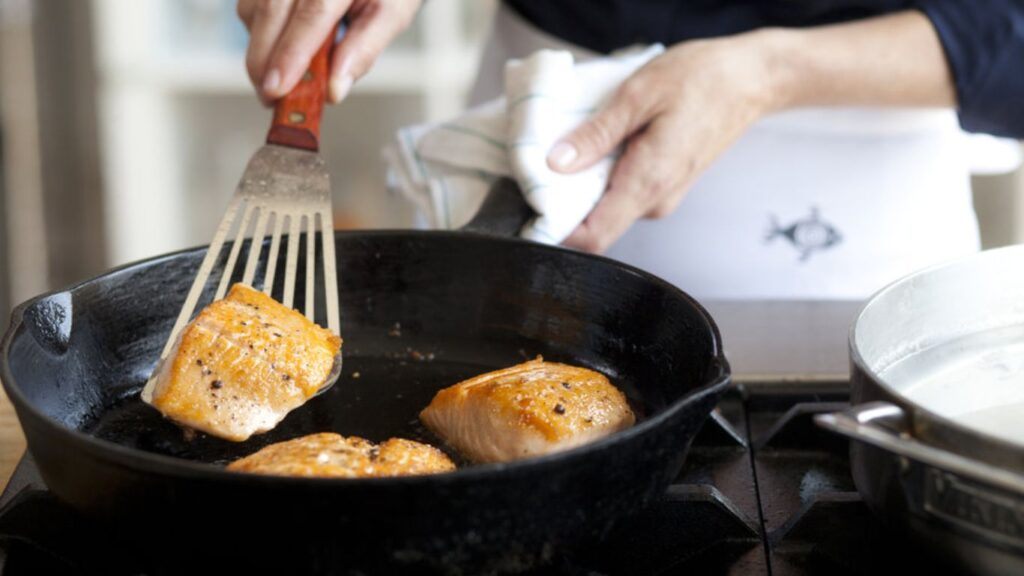Embarking on a journey toward a low-sodium lifestyle opens doors to a world of vibrant health and flavorful discoveries. In a society accustomed to the allure of salty indulgences, the shift to a low-sodium approach represents a transformative step toward holistic well-being. This blog serves as a guiding compass through this enriching path, offering insights, strategies, and encouragement for those seeking to navigate the terrain of reduced sodium intake. Join us as we unravel the myriad benefits, explore culinary creativity, and empower ourselves with informed choices on this fulfilling quest for a healthier, more vibrant life.
Low Sodium Lifestyle: A Path to Healthier Living
Understanding Sodium and Its Impact
- Sodium’s role in the body: Sodium plays a pivotal role in maintaining fluid balance, nerve function, and muscle contractions. It regulates blood pressure and supports proper cellular function. However, excessive sodium intake can upset this balance, leading to health issues like hypertension and heart disease. Moderation is key; while the body requires sodium, exceeding recommended levels can disrupt the delicate equilibrium, emphasizing the importance of mindful consumption for overall health and well-being.
- The dangers of excessive sodium intake: Excessive sodium intake has alarming implications for health, notably elevating the risk of hypertension, a leading cause of heart disease and stroke. High sodium levels can prompt the body to retain water, increasing blood pressure and straining the heart. Over time, this heightened pressure damages blood vessels, raising the risk of heart disease, stroke, and other cardiovascular complications. Managing sodium intake becomes pivotal in averting these potentially life-threatening conditions.
- Current statistics and trends in sodium consumption: Current statistics underscore a concerning trend in sodium consumption, with global averages surpassing recommended limits. Studies reveal an average daily intake exceeding 3,400 milligrams, significantly above the recommended 2,300 milligrams for healthy adults. Alarmingly, many individuals consume well over 4,000 milligrams daily. The prevalence of processed foods, prevalent in modern diets, remains a primary contributor, highlighting the urgent need for increased awareness and proactive measures to address this pervasive health concern.

The Low Sodium Lifestyle: Embracing Change
Why Choose a Low Sodium Lifestyle
Reducing sodium intake offers a spectrum of health benefits, notably lowering blood pressure, decreasing the risk of heart disease, stroke, and kidney ailments. This dietary adjustment supports cardiovascular health by reducing strain on the heart and blood vessels. Moreover, a low-sodium diet aids in fluid balance, minimizing bloating and edema. Enhanced sodium moderation also aligns with improved overall health, fostering better kidney function and potentially lowering the risk of osteoporosis and stomach cancer.
Initiating the Transition
Understanding dietary guidelines: Dietary guidelines recommend limiting sodium intake to 2,300 milligrams per day for most adults, with an ideal target of 1,500 milligrams for specific populations like individuals over 50, those with hypertension, diabetes, or kidney disease. Understanding and adhering to these guidelines promote better health outcomes and reduced risk of related health complications.
Steps for initiating the transition: Initiating the transition involves reading labels diligently, opting for low-sodium or no-added-salt products. Embracing whole foods like fresh fruits, vegetables, lean meats, and whole grains minimizes sodium intake. Cooking from scratch empowers control over ingredients, fostering flavorful meals without excessive salt.
Strategies for Reducing Sodium Intake
Reading Labels and Making Informed Choices
- Understanding nutrition labels entails scanning for sodium content per serving, noting the percentage of daily value (%DV), and recognizing varied sodium-related terms like sodium bicarbonate or monosodium glutamate. Identifying hidden sources involves inspecting ingredients for sodium derivatives, often found in additives, flavorings, and preservatives.
- Go for products labeled “low sodium” or “no added salt.” Compare different brands for lower sodium content. Choose fresh or frozen fruits and vegetables without added sauces. Go for unsalted nuts and seeds. Rinse canned beans or vegetables to reduce sodium. Check multiple product options to find the lowest sodium choice.
Cooking Techniques and Flavor Enhancers
- Exploring alternative cooking methods offers a flavorful shift away from relying on added salt. Techniques like grilling, roasting, or steaming intensify natural flavors without sodium. Herbs and spices emerge as stars, imparting depth and complexity to dishes. Think rosemary, thyme, or cumin for savory notes and cinnamon or nutmeg for sweetness.
- Introducing diverse flavor enhancers like citrus zest, vinegars, and aromatic oils elevates taste profiles. Infuse olive oil with herbs for a zesty marinade or create tangy dressings using lemon or balsamic vinegar.
- Recipes tailored for low-sodium lifestyles open culinary horizons. Consider a vibrant ratatouille bursting with fresh produce or a colorful quinoa salad with a citrus vinaigrette. Utilize spice blends like za’atar or curry powder to season meats and vegetables, enhancing taste without relying on salt.
- Cooking tips focus on gradual reductions in salt while amplifying other flavors. Experiment with different combinations of herbs and spices, balancing savory, sweet, and tangy notes. Embrace citrus juices as marinades or finishing touches. These methods enrich dishes, proving that reducing sodium doesn’t mean sacrificing taste.

Creating Flavorful Meals without Sodium
- For various dietary preferences, a low-sodium approach offers diverse, delicious meal ideas. Vegetarian options include vibrant salads featuring leafy greens, roasted vegetables, and protein-packed legumes. Mediterranean-inspired dishes spotlight fresh ingredients like tomatoes, olives, and olive oil, enhancing flavor with herbs like oregano and basil.
- Explore innovative combinations: a quinoa-stuffed bell pepper with diced veggies or a hearty lentil soup infused with cumin and turmeric. For pescatarians, grilled fish drizzled with a lemon-herb marinade offers a burst of flavor without excess salt.
- Creative fusion dishes, like a tofu stir-fry combining Asian flavors with fresh ginger and low-sodium soy sauce alternatives, broaden culinary horizons. Emphasizing seasonal produce and herbs introduces complexity without relying on salt. Utilize bold combinations: watermelon and feta salad with mint or roasted cauliflower seasoned with smoked paprika and garlic.
- By emphasizing fresh, wholesome ingredients and inventive pairings, these low-sodium meal ideas cater to diverse tastes while promoting a healthier, flavorful culinary experience.
Overcoming Challenges and Navigating Social Situations
Coping with Taste Adaptation
Reducing sodium involves taste bud adaptation, which takes time. Initially, flavors might seem muted. To adjust, gradually reduce salt, allowing taste buds to acclimate. Experiment with herbs, spices, and acidic elements to enhance taste. Over time, your palate will appreciate and savor the natural flavors of foods without craving excess salt.
Dining Out and Social Gatherings
When dining out, opt for grilled or steamed dishes, request sauces and dressings on the side, and inquire about low-sodium options. Communicate dietary needs clearly to servers or chefs. During social gatherings, offer to bring a low-sodium dish, communicate preferences, and focus on fresh, minimally processed options.
Benefits Beyond Health
Enhanced Awareness of Food Choices
Adopting a low-sodium lifestyle fosters mindfulness in selecting foods, prompting scrutiny of labels and ingredient lists. This journey leads to a profound understanding of food sources, recognizing hidden sodium in processed items. It cultivates an awareness that prioritizes whole, fresh options and embraces the significance of natural, unprocessed ingredients.
Cultivating a Culinary Adventure
Reducing reliance on salt unveils a world of diverse flavors and culinary possibilities. Embrace creativity by experimenting with herbs, spices, and global flavors. Explore new recipes and ingredients, fostering a richer, more nuanced palate that celebrates natural flavors and expands culinary horizons.
Sustainability and Long-term Commitment

Making it a Sustainable Lifestyle
Maintaining a low-sodium lifestyle necessitates consistency and gradual adjustments. Establish sustainable habits by slowly reducing salt, embracing flavorful alternatives, and prioritizing whole foods. Celebrate milestones, no matter how small, to reinforce progress. Overcome setbacks by refocusing on goals and learning from experiences. Consistency is key; by persistently making mindful choices and acknowledging achievements, one can cultivate a lasting, healthful low-sodium lifestyle.
Conclusion
Embarking on the low-sodium journey illuminates a path to vibrant health and culinary exploration. By embracing mindful choices, diverse flavors, and gradual changes, this lifestyle fosters wellness. Celebrate each step toward reduced sodium intake as a testament to a richer, healthier, and more fulfilling existence.
Also read: Understanding Food Allergies: A Comprehensive Guide
